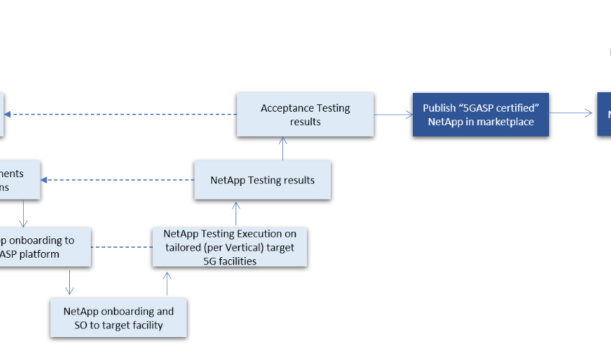In continuation of our series of 5GASP blog articles, now that we have presented the concept of what a modern Network Application is in the context of 5GASP, as well as what its design and development entail, we will outline in brief the motivation or why and how this endeavor to make self-testing and certification of this type of application easy and more accessible to partners, specifically in the Small and Medium Enterprise (SME) sector of our ecosystem.
Ever since 2012, the telecom industry has embarked on a transformation from specialized appliances, to virtualised, and later, containerised software applications that deliver Network Functions (NFs). This has, of course, been in line with the still ongoing trend of software transformation in many industries, including the telecom and service-provider related sectors. During the times before software-defined network applications, a lot of value and barrier to entry in the sector depended on distribution. With this change now ongoing, there is a considerable shift in market-value chains to the towards development: function producers, who traditionally have had a limited role in later stages of the market with vendors, channels, distributors, ISVs, and operators bridging the gap towards the end-users, are now empowered to be able to directly provide their appliances/application services to end-users and the way to realize that would be through enabling platforms.
Presently, users can pick their virtualised or container infrastructure manager of choice, decide on their servers of choice, and most importantly, pick from an ecosystem of Network Functions from vendors; still, marketplaces are nascent in this area; and as such, the aim for 5GASP is to fill an important role as an easy-available open self-certification system and community program.
Many industry players run their own proprietary certification programs for partner readiness and have had a positive experience of building momentum in their ecosystems by helping their app developer communities, and customers, with a minimum of overhead in the value chain. Learnings from such programs include the fact that self-certification gives partners yet a choice: the option to pursue is at the Network Application developer’s disposal to verify that their Network Functions work with a particular site; self-certification also helps prepare relevant workloads for easy deployment with and makes their value transferable across certification-participating sites in Europe.
Hence, 5GASP aims to strengthen the value-chain of local European enterprises, specifically ones (usually small-to-medium) that lack the teams and budget to internally operationalize their own app certification program, a cloud-based self-certification path providing more flexibility to define their own timelines, help them certify workloads, and reduce dependencies on building an on-prem lab for preparations.
On the other hand, the benefits of self-certification through programs like 5GASP are an important step in re-defining telco service platforms in the value chain. Consider the following envisioned flow of deployment of an app to its field-validation in the participating 5GASP facilities:

It is evident that development costs, as well as the time to market for a new 5G solution, would be driven down by an automated self-driven pipeline in the current market where vendors try to leverage the cloud-native software engineering approach to offer carrier-grade SLAs to Network Functions. This is an essential part in the envisioned role and value of 5GASP for self-certification and validation of 5G Network Applications for the European SME community.


